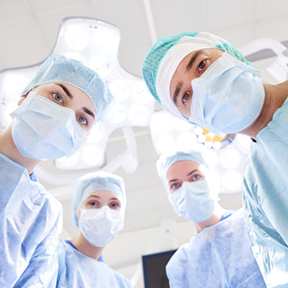…and why it should.
By Charles P Williams, MD, FACS, Bon Secours Surgical Specialists
 When laparoscopic surgery was introduced more than 25 years ago, it was heralded as a major advancement in the field of patient care. With video camera assistance and thin instrumentation, surgeons could perform certain procedures with incisions of no more than half an inch, rather than the much larger incisions required in open procedures. It marked a definite change in the way surgery was performed, promising patients far less post-operative pain, shorter hospitalizations, much quicker recovery time, and an earlier return to daily life.
When laparoscopic surgery was introduced more than 25 years ago, it was heralded as a major advancement in the field of patient care. With video camera assistance and thin instrumentation, surgeons could perform certain procedures with incisions of no more than half an inch, rather than the much larger incisions required in open procedures. It marked a definite change in the way surgery was performed, promising patients far less post-operative pain, shorter hospitalizations, much quicker recovery time, and an earlier return to daily life.
Today, in more and more operating suites in major medical centers, conventional laparoscopic surgery is becoming a thing of the past. The reasons are simple: robotic assisted laparoscopic surgery affords the surgeon far greater visualization of the surgical field, and the improved instrumentation available for use in robotic procedures provides a nearly 360-degree range of motion that the surgeon cannot achieve with standard laparoscopic instruments. The higher resolution of images and the flexion, extension and rotation of these instruments makes a huge difference when we’re dissecting.
The advantages to our patients are obvious: with improved visualization, especially in cases where there’s a lot of scarring and adhesions, the ability to move the instruments where we need them to go significantly reduces the need to have to resort to an open procedure in mid-surgery. We can reduce the risk of some of the morbidities that occur in surgery, such as seromas and hematomas, or injury to surrounding organs and vessels, because we can visualize the finer structures better, allowing us greater opportunity to keep them out of the surgical field. We can more easily visualize the vessels properly in a dissection versus cutting through them and discovering later that the vessel was retracted and started to bleed.
There are advantages to the surgeon, as well. We’re no longer at the bedside, having to contort and twist into some unnatural positions to get the cases completed; rather, we’re sitting in a comfortable and more ergonomically appropriate position at a console. There’s far less wear and tear on the surgeon’s body, improving our ability to focus on the very delicate work we’re doing. We can work smarter, and therefore work a little more, without the fatigue that besets a standing and twisting surgeon – especially one who’s doing cases back to back, all day long.
General surgeons and specialists alike recognize that the robot is a helpful tool. The systems and the platform continue to advance, resulting in greatly improved capabilities. One of the most exciting recent advances, especially for colon resection cases, bariatric and pancreatic surgeries, is the ability of the newer robotic devices to staple. It’s a much needed development for these very difficult cases.
Unfortunately, in most places (here and elsewhere), what’s lagging behind is the availability of the technology. We have surgeons lined up who want to use system because they recognize its profound benefits. Essentially, any surgery that can be performed laparoscopically can be done better and quicker by using the robotic system.
 Dr. Charles P. Williams is a Board certified general surgeon with Bon Secours Surgical Specialists. He is a graduate of the University of North Carolina Chapel Hill School of Medicine. bshr.com
Dr. Charles P. Williams is a Board certified general surgeon with Bon Secours Surgical Specialists. He is a graduate of the University of North Carolina Chapel Hill School of Medicine. bshr.com

